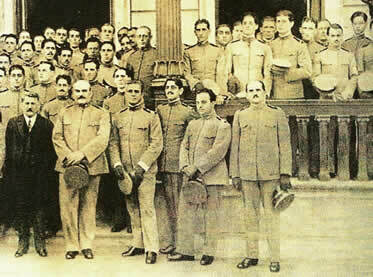Throughout the history of Western Europe, several wars of long duration and very large proportions determined the formation of countries, the construction of borders, many economic articulations, among others factors. For that, it was always necessary that the countries participating in the wars (whether winners or losers) signed agreements so that new hegemonic orders could be opened. Based on this, we can say that one of the most important moments in the history of Europe was the Thirty Years War (1618 to 1648), which involved the most powerful states of the time. At the end of this war, a set of eleven treaties was established, which make up what is now called "PeaceinWestphalia”.
The Thirty Years War was part of the succession of religious civil wars that started from the RenovationsProtestants and of the Counter-ReformCatholic. Aristocratic houses, such as the Habsburgs, who disputed the succession lineages of European states, were intimately intertwined with religion. States such as France, the Germanic principalities, Denmark, Sweden, Bohemia and the Netherlands were involved in the war, leading Europe to looting, massacres, economic and social crisis, etc.
However, with the end of the war in 1648, the treaties signed between the countries brought a new conception of international law and the birth of what would become known as the “Reason of State”, that is, the pragmatism and bureaucratic efficiency of the Modern State. New states emerged and others, previously submissive, became autonomous. The main beneficiary of the war was France, which managed to expand its domains over regions such as Alsace-Lorraine. But the Westphalian Peace treaties also determined other transformations, as researcher Henrique Carneiro indicated:
Do not stop now... There's more after the advertising ;)
“[...] the first [of the treaties] was delivered to Spain and the Netherlands (30 January 1648) at Münster. A few months later the treaty was signed between the Empire (Fernando III), the Germanic princes (especially Brandenburg and Bavaria), France, Sweden and the Papacy, in Osnabrück and Münster (24 October of 1648).” [1]
After that, Carneiro continues:
“A general amnesty was proclaimed and the victors received territorial concessions. France gains Alsace, establishes its border on the west bank of the Rhine and also gains Metz, Toul and Verdun. Sweden gains control of the Baltic and the estuaries of the Oder, Elbe and Weser rivers, as well as western Pomerania, including Stettin, the port of Wismar, the acerbishopric of Bremen and the bishopric of Verdun. The United Provinces and the Swiss Confederation are confirmed as independent republics.” [2]
It can be seen that there were decisive changes in the map of Europe with the Peace of Westphalia, which was only reconfigured again with the RevolutionFrench, in 1789, and, above all, with the warsNapoleonic (1800-1815).
GRADES:
[1]: CARNEIRO, Henrique. "War of the Thirty Years". In: MAGNOLI, Demetrius (ed.). history of wars. São Paulo: Context, 2013. P. 185.
[2]: Idem. P. 185.
By Me. Cláudio Fernandes


